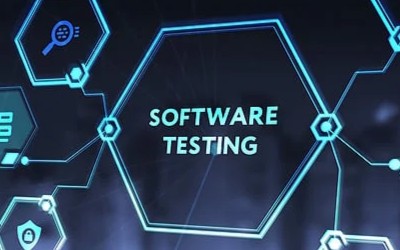Highlights:- Introduction to Information Security: Understand the principles of information security and theimportance of securing systems. - Network Security: Learn techniques to protect networks fro...
Highlights:
- Introduction to Information Security: Understand the principles of information security and theimportance of securing systems. - Network Security: Learn techniques to protect networks from cyber threats like hacking andmalware. - Cryptography: Study encryption methods and how they are used to secure data. - Access Control: Implement effective authentication, authorization, and auditing mechanisms.
- Security Risk Management: Learn to identify, assess, and mitigate security risks within an
organization. - Incident Response and Forensics: Develop skills to handle and investigate security breaches. - Cybersecurity Frameworks and Standards: Explore industry-standard frameworks and regulations
like ISO 27001, NIST, and GDPR. - Security Technologies: Gain hands-on experience with firewalls, IDS/IPS, and other security tools.
Course Objective:
By the end of this course, you will be able to: - Understand core principles of information security and apply them to protect systems. - Implement network security measures to defend against threats and attacks. - Use encryption techniques to secure data and communications. - Design and implement access control systems to ensure proper authentication and authorization. - Identify and mitigate security risks and vulnerabilities in IT infrastructure. - Respond to and investigate security incidents and breaches. - Work with common security tools and technologies, including firewalls, intrusion
detection/prevention systems (IDS/IPS), and anti-malware software. - Comply with security standards and regulations.
Course Structure:
1. Introduction to Information Security
- Overview of Information Security: What is information security, and why is it important?
- The CIA Triad: Confidentiality, Integrity, and Availability. - Types of Security Threats: Malware, phishing, denial of service, data breaches, etc. - Information Security Governance and Management.
- Security Policies and Procedures: Creating and enforcing security policies in an organization. - Security Laws and Regulations: Understanding legal aspects like GDPR, HIPAA, and CCPA
2. Network Security
- Overview of Network Security: Understanding network architecture and potential vulnerabilities. - Types of Network Attacks: Man-in-the-middle, DoS, DDoS, spoofing, etc. - Firewalls and Intrusion Detection/Prevention Systems (IDS/IPS). - Virtual Private Networks (VPNs): Securing communications over public networks. - Network Security Protocols: SSL/TLS, IPsec, and others. - Implementing Secure Network Design: Best practices for securing network infrastructure
3. Cryptography
- Introduction to Cryptography: The role of encryption in cybersecurity. - Types of Cryptography: Symmetric, asymmetric, and hash functions. - Public Key Infrastructure (PKI): Digital certificates and certificate authorities. - Cryptographic Protocols: SSL/TLS, HTTPS, and their use in securing communication. - Implementing Cryptographic Solutions: Practical applications of cryptography in protecting data.
4. Access Control and Authentication
- Principles of Access Control: Ensuring only authorized users can access resources. - Authentication Mechanisms: Passwords, biometrics, multi-factor authentication (MFA). - Authorization Models: Role-based access control (RBAC), mandatory access control (MAC), anddiscretionary access control (DAC). - Identity and Access Management (IAM): Managing users, roles, and permissions. - Auditing and Logging: Monitoring and auditing access to sensitive information.
5. Security Risk Management
- Introduction to Risk Management: Identifying, assessing, and managing risks. - Risk Assessment Methodologies: Qualitative vs. quantitative risk analysis. - Risk Mitigation Strategies: Implementing controls to reduce risks. - Business Continuity and Disaster Recovery: Planning for security breaches and ensuring systemresilience. - Incident Management: Establishing an incident response plan and response procedures.
6. Incident Response and Digital Forensics
- Introduction to Incident Response: The steps involved in responding to a cybersecurity incident. - Incident Response Lifecycle: Detection, containment, eradication, and recovery. - Digital Forensics: Collecting, analyzing, and preserving evidence after a cyberattack. - Tools for Incident Response: Investigating security incidents using tools like Wireshark, FTKImager, and EnCase. - Legal and Ethical Issues in Forensics: Ensuring compliance with legal standards when handlingdata.
7. Security Technologies and Tools
- Security Tools Overview: Firewalls, anti-malware software, IDS/IPS, and SIEM(Security
Information and Event Management). - Implementing and Configuring Firewalls: Protecting network boundaries fromthreats. - Anti-Malware and Antivirus Solutions: Detecting and defending against malicious software. - Using SIEM for Threat Detection and Monitoring: Collecting and analyzing security event data. - Vulnerability Scanning and Penetration Testing: Identifying vulnerabilities before attackers do.
8. Cybersecurity Frameworks and Standards
- Overview of Industry Frameworks: NIST Cybersecurity Framework, ISO/IEC 27001. - Compliance and Regulatory Requirements: GDPR, HIPAA, PCI-DSS. - Best Practices for Securing IT Systems: Building a secure IT infrastructure based on standards. - Security Auditing and Compliance: Auditing security controls and maintaining compliance withregulations.
9. Capstone Project and Real-World Applications
- Developing a Security Strategy: Designing a comprehensive security policy for an organization. - Implementing Security Measures: Applying encryption, firewalls, and access control to protect
data. - Incident Response Plan: Creating a plan for identifying and responding to potential cyber threats. - Security Auditing: Conducting a security audit on a hypothetical organization. - Final Project Presentation: Presenting the security strategies and solutions implemented.
Learning Methodology:
- Interactive Lessons: Engage in hands-on tutorials, coding exercises, and case studies to learnkeysecurity concepts. - Practical Labs: Work on real-world scenarios to implement and manage security measures. - Assessments and Quizzes: Reinforce learning through quizzes, assignments, and project
assessments. - Live Sessions: Participate in live Q&A and troubleshooting with instructors. - Discussion Forums: Collaborate with peers, ask questions, and discuss solutions in dedicatedforums
Who Should Enroll:
- Beginners: Individuals who are new to cybersecurity and want to learn about securing informationsystems. - IT Professionals: Network administrators, system administrators, and IT managers who wishtospecialize in cybersecurity.
- Developers: Software developers interested in learning about secure coding practices and
application security. - Business Professionals: Entrepreneurs and business owners who need to understand security toprotect their organizations. - Students: Students studying computer science, information technology, or related fields whowant
to pursue a career in cybersecurity. - Security Enthusiasts: Individuals passionate about cybersecurity who want to start a career inthefield. The Diploma in Information System Security course will equip you with the knowledge and skills
needed to secure information systems, protect against cyber threats, and manage security risks. Whether you are looking to enter the cybersecurity field or enhance your current skills, this coursewill provide you with the expertise needed to design and implement effective security measures inany organization













